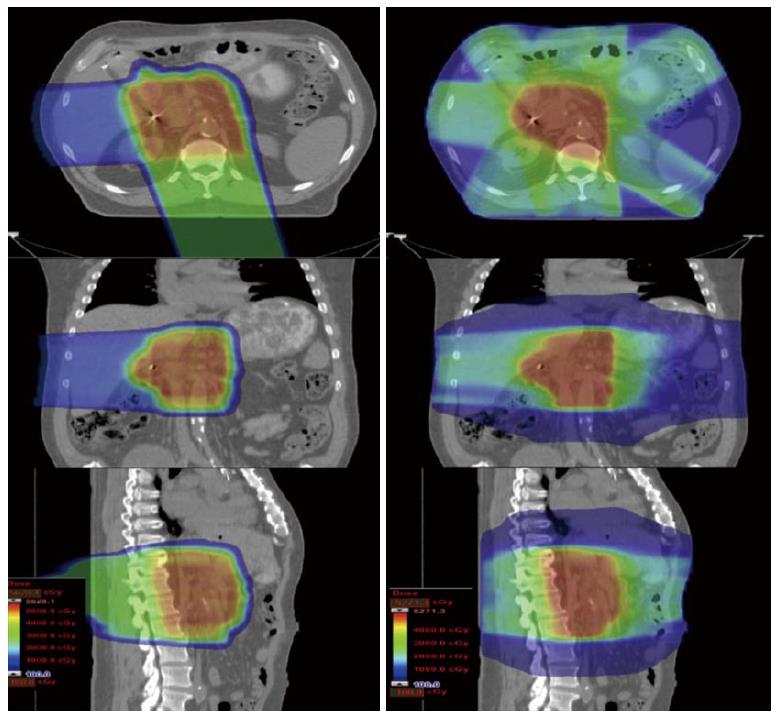Copyright
©The Author(s) 2015.
World J Gastrointest Oncol. Sep 15, 2015; 7(9): 141-147
Published online Sep 15, 2015. doi: 10.4251/wjgo.v7.i9.141
Published online Sep 15, 2015. doi: 10.4251/wjgo.v7.i9.141
Figure 3 A passively scattered proton plan is shown on the left and an intensity-modulated X-ray therapy plan is shown on the right for a typical patient receiving postoperative radiotherapy for pancreatic cancer.
To achieve a conformal dose distribution, the intensity-modulated X-ray therapy plan delivers beams from multiple angles and necessarily irradiates the entire cylinder of the abdomen. With protons, however, because the dose distribution can be modulated along the beam path, significant sparing of sensitive gastrointestinal structures (small bowel and stomach) can be achieved. In the proton plan, 75% of the dose is delivered via a posterior field that irradiates the tumor bed but does not exit into the small bowel. The remaining dose is delivered through a right lateral field that also irradiates the tumor bed but does not exit into the stomach.
- Citation: Nichols RC, Huh S, Li Z, Rutenberg M. Proton therapy for pancreatic cancer. World J Gastrointest Oncol 2015; 7(9): 141-147
- URL: https://www.wjgnet.com/1948-5204/full/v7/i9/141.htm
- DOI: https://dx.doi.org/10.4251/wjgo.v7.i9.141









